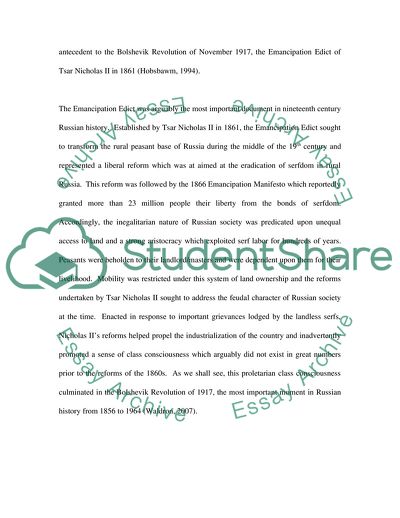Cite this document
(To What Extent is the Bolshevik Revolution of November 1917 a Turning Coursework, n.d.)
To What Extent is the Bolshevik Revolution of November 1917 a Turning Coursework. https://studentshare.org/history/1728616-to-what-extent-is-the-bolshevik-revolution-of-november-1917-a-key-turning-point-in-the-development-of-modern-russia-in-the-years-1856-1964
To What Extent is the Bolshevik Revolution of November 1917 a Turning Coursework. https://studentshare.org/history/1728616-to-what-extent-is-the-bolshevik-revolution-of-november-1917-a-key-turning-point-in-the-development-of-modern-russia-in-the-years-1856-1964
(To What Extent Is the Bolshevik Revolution of November 1917 a Turning Coursework)
To What Extent Is the Bolshevik Revolution of November 1917 a Turning Coursework. https://studentshare.org/history/1728616-to-what-extent-is-the-bolshevik-revolution-of-november-1917-a-key-turning-point-in-the-development-of-modern-russia-in-the-years-1856-1964.
To What Extent Is the Bolshevik Revolution of November 1917 a Turning Coursework. https://studentshare.org/history/1728616-to-what-extent-is-the-bolshevik-revolution-of-november-1917-a-key-turning-point-in-the-development-of-modern-russia-in-the-years-1856-1964.
“To What Extent Is the Bolshevik Revolution of November 1917 a Turning Coursework”. https://studentshare.org/history/1728616-to-what-extent-is-the-bolshevik-revolution-of-november-1917-a-key-turning-point-in-the-development-of-modern-russia-in-the-years-1856-1964.


